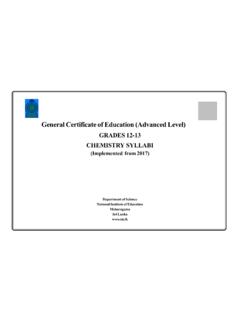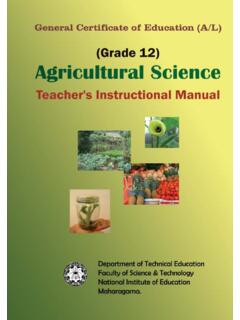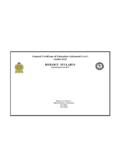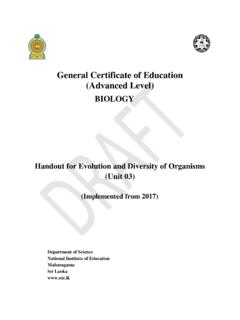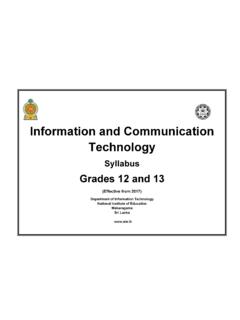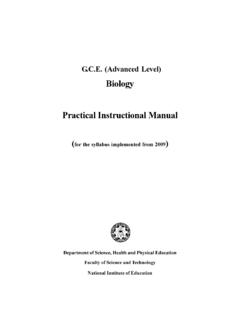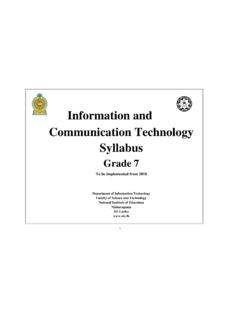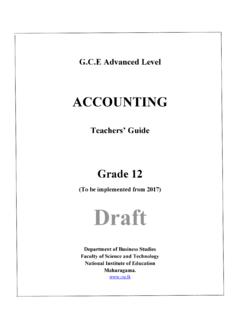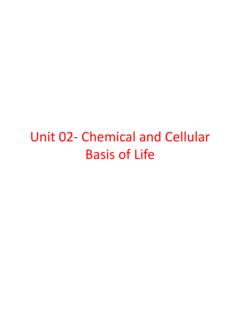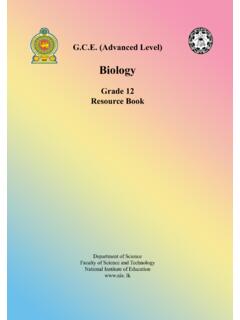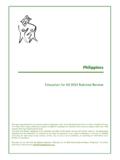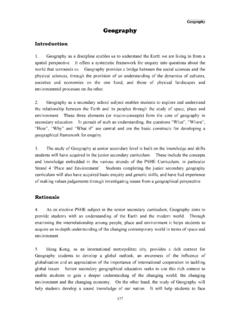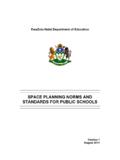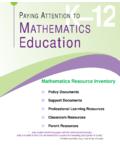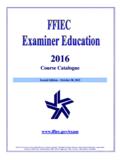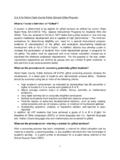Transcription of Teachers’ Guide Grade 12 - nie.lk
1 Information and Communication Technology Teachers Guide Grade 12 (Effective from 2017) Department of Information Technology National Institute of education Maharagama Sri Lanka Information and Communication Technology Grade 12 teacher s Guide National Institute of education First print 2017 ISBN: Department of Information Technology Faculty of Science and Technology National Institute of education Maharagama Printed by i CONTENTS Page No Message from the Director General ii Message from the Deputy Director General iii Curriculum Committee iv-v Introduction vi Common National Goals vii Basic Competencies viii-x Objectives of the Subject xi Proposed number of periods for each units xii Syllabus 1 27
2 Learning Teaching process 28 -191 School Policies and Programs 192 Assessment and Evaluation 193 ii Message from the Director General With the primary objective of realizing the National Educational Goals recommended by the National education Commission, the then prevalent content based curriculum was modernized, and the first phase of the new competency based curriculum was introduced to the eight year curriculum cycle of the primary and secondary education in Sri Lanka in the year 2007 The second phase of the curriculum cycle thus initiated was introduced to the education system in the year 2015 as a result of a curriculum rationalization process based on research findings and various proposals made by stake holders.
3 Within this rationalization process the concepts of vertical and horizontal integration have been employed in order to build up competencies of students, from foundation level to higher levels, and to avoid repetition of subject content in various subjects respectively and furthermore, to develop a curriculum that is implementable and student friendly. The new Teachers Guides have been introduced with the aim of providing the teachers with necessary guidance for planning lessons, engaging students effectively in the learning teaching process, and to make Teachers Guides will help teachers to be more effective within the classroom.
4 Further, the present Teachers Guides have given the necessary freedom for the teachers to select quality inputs and activities in order to improve student competencies. Since the Teachers Guides do not place greater emphasis on the subject content prescribed for the relevant grades, it is very much necessary to use these guides along with the text books compiled by the Educational Publications Department if, Guides are to be made more effective. The primary objective of this rationalized new curriculum, the new Teachers Guides, and the new prescribed texts is to transform the student population into a human resource replete with the skills and competencies required for the world of work, through embarking upon a pattern of education which is more student centered and activity based.
5 I wish to make use of this opportunity to thank and express my appreciation to the members of the Council and the Academic Affairs Board of the NIE the resource persons who contributed to the compiling of these Teachers Guides and other parties for their dedication in this matter. Dr. (Mrs.) Jayanthi Gunasekara Director General National Institute of education iii Message from the Deputy Director General education from the past has been constantly changing and forging forward. In recent years, these changes have become quite rapid.
6 The Past two decades have witnessed a high surge in teaching methodologies as well as in the use of technological tools and in the field of knowledge creation. Accordingly, the National Institute of education is in the process of taking appropriate and timely steps with regard to the education reforms of 2015. It is with immense pleasure that this Teachers Guide where the new curriculum has been planned based on a thorough study of the changes that have taken place in the global context adopted in terms of local needs based on a student-centered learning-teaching approach, is presented to you teachers who serve as the pilots of the schools system.
7 An instructional manual of this nature is provided to you with the confidence that, you will be able to make a greater contribution using this. There is no doubt whatsoever that this Teachers Guide will provide substantial support in the classroom teaching-learning process at the same time. Furthermore the teacher will have a better control of the classroom with a constructive approach in selecting modern resource materials and following the Guide lines given in this book. I trust that through the careful study of this Teachers Guide provided to you, you will act with commitment in the generation of a greatly creative set of students capable of helping Sri Lanka move socially as well as economically forward.
8 This Teachers Guide is the outcome of the expertise and unflagging commitment of a team of subject teachers and academics in the field education . While expressing my sincere appreciation for this task performed for the development of the education system, my heartfelt thanks go to all of you who contributed your knowledge and skills in making this document such a landmark in the field. Jayawardhana Deputy Director General Faculty of Science and Technology iv 04. Curriculum Committee Guidance and Approval Academic Affairs Board National Institute of education Subject Coordinator Mr.
9 S. Shanmugalingam Senior Lecturer National Institute of education Resource Contributions Mr. D. Anura Jayalal Director, Department of IT ( , PG in Ins Design, PGDE, ) National Institute of education Mr. S. Shanmugalingam ( , PGDE) Senior Lecturer Department of Information Technology National Institute of education Dr. Damith D Karunarathna ( ) Senior Lecturer (UCSC) University of Colombo. Dr. Gamini Wijerathna ( ) Dean, Faculty of Computing Technology University of Kalaniya Dr. ( ) Senior Lecturer, University of Kelaniya ( ) Senior Lecturer, University of Jaffna ( ) Senior Lecturer, University of Peradeniya ( ) Senior Lecturer, (UCSC) University of Colombo ( ) Assistant Director of education , Ministry of education .
10 Ms. Nirmali ( ) teacher , Anula Vidyalaya Mr. (MIT) teacher . KG/Mw Parakrama MV, Rambukkana. Ms. Silva ( ) teacher . Almeda , Akuressa v Ms. ( ) teacher . Royal College, Colombo 7. Mr. (MIT) teacher . Jaffna Hindu College, Jaffna. Mr. (MIT) teacher . KN/Vaddakachchi , Vaddakachchi. vi Introduction Information and Communication Technology has been identified worldwide as a tool that can be used to improve productivity, efficiency and effectiveness of organizational work and the daily activities of individuals.
